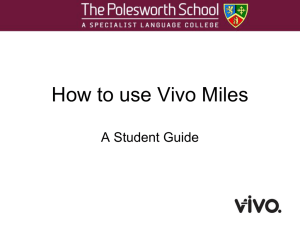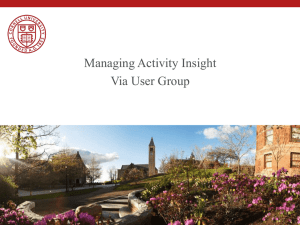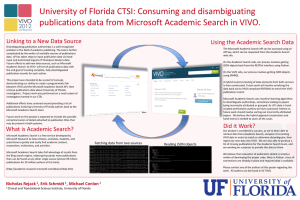Implementing Curriculum Vitae and Biosketch Rich Text
advertisement
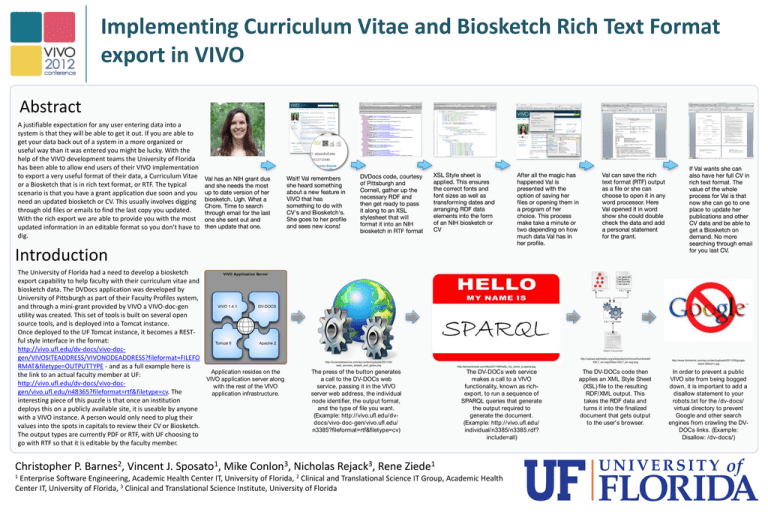
Implementing Curriculum Vitae and Biosketch Rich Text Format export in VIVO Abstract A justifiable expectation for any user entering data into a system is that they will be able to get it out. If you are able to get your data back out of a system in a more organized or useful way than it was entered you might be lucky. With the help of the VIVO development teams the University of Florida has been able to allow end users of their VIVO implementation to export a very useful format of their data, a Curriculum Vitae or a Biosketch that is in rich text format, or RTF. The typical scenario is that you have a grant application due soon and you need an updated biosketch or CV. This usually involves digging through old files or emails to find the last copy you updated. With the rich export we are able to provide you with the most updated information in an editable format so you don’t have to dig. Introduction The University of Florida had a need to develop a biosketch VIVO Application Server export capability to help faculty with their curriculum vitae and biosketch data. The DVDocs application was developed by University of Pittsburgh as part of their Faculty Profiles system, VIVO 1.4.1 DV-DOCS and through a mini-grant provided by VIVO a VIVO-doc-gen utility was created. This set of tools is built on several open source tools, and is deployed into a Tomcat instance. Once deployed to the UF Tomcat instance, it becomes a RESTful style interface in the format: Tomcat 6 Apache 2 http://vivo.ufl.edu/dv-docs/vivo-docgen/VIVOSITEADDRESS/VIVONODEADDRESS?fileformat=FILEFO RMAT&filetype=OUTPUTTYPE - and as a full example here is Application resides on the the link to an actual faculty member at UF: VIVO application server along http://vivo.ufl.edu/dv-docs/vivo-docwith the rest of the VIVO gen/vivo.ufl.edu/n48365?fileformat=rtf&filetype=cv. The application infrastructure. interesting piece of this puzzle is that once an institution deploys this on a publicly available site, it is useable by anyone with a VIVO instance. A person would only need to plug their values into the spots in capitals to review their CV or Biosketch. The output types are currently PDF or RTF, with UF choosing to go with RTF so that it is editable by the faculty member. http://lucianwebservice.com/wp-content/uploads/2011/05/ web_services_wheels_and_globe.png The press of the button generates a call to the DV-DOCs web service, passing it in the VIVO server web address, the individual node identifier, the output format, and the type of file you want. (Example: http://vivo.ufl.edu/dvdocs/vivo-doc-gen/vivo.ufl.edu/ n3385?fileformat=rtf&filetype=cv) http://upload.wikimedia.org/wikipedia/commons/thumb/e/e6/ XSLT_en.svg/220px-XSLT_en.svg.png http://semanticweb.com/files/2011/08/hello_my_name_is-sparql.jpg The DV-DOCs web service makes a call to a VIVO functionality, known as richexport, to run a sequence of SPARQL queries that generate the output required to generate the document. (Example: http://vivo.ufl.edu/ individual/n3385/n3385.rdf? include=all) Christopher P. Barnes2, Vincent J. Sposato1, Mike Conlon3, Nicholas Rejack3, Rene Ziede1 1 http://www.htmlremix.com/wp-content/uploads/2011/05/googleblock-300x211.jpg Enterprise Software Engineering, Academic Health Center IT, University of Florida, 2 Clinical and Translational Science IT Group, Academic Health Center IT, University of Florida, 3 Clinical and Translational Science Institute, University of Florida The DV-DOCs code then applies an XML Style Sheet (XSL) file to the resulting RDF/XML output. This takes the RDF data and turns it into the finalized document that gets output to the user's browser. In order to prevent a public VIVO site from being bogged down, it is important to add a disallow statement to your robots.txt for the /dv-docs/ virtual directory to prevent Google and other search engines from crawling the DVDOCs links. (Example: Disallow: /dv-docs/)

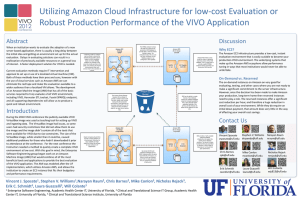
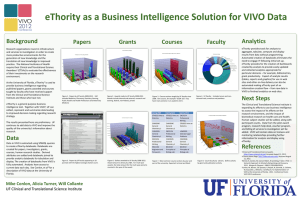
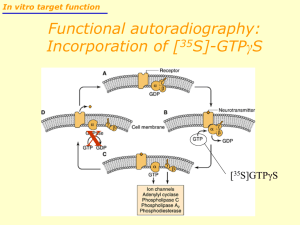
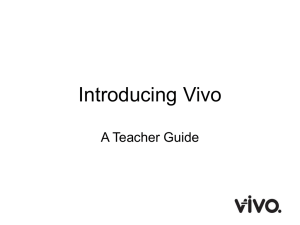
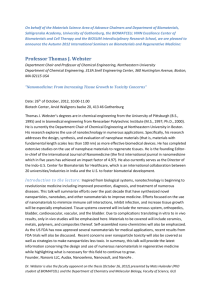
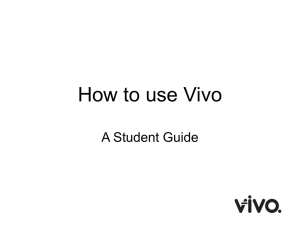
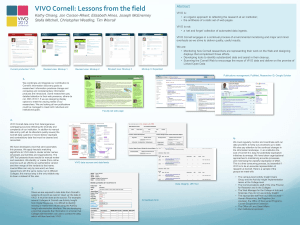
![abstract template [2]](http://s3.studylib.net/store/data/006905920_1-31a613634d7accafb57436fea4552fd7-300x300.png)
